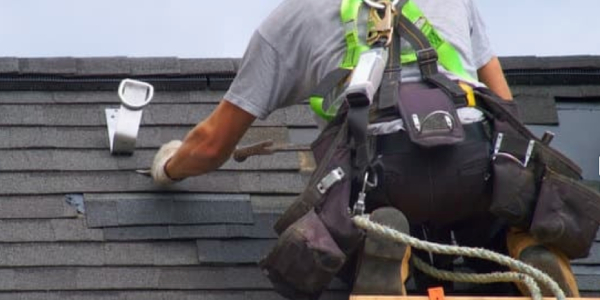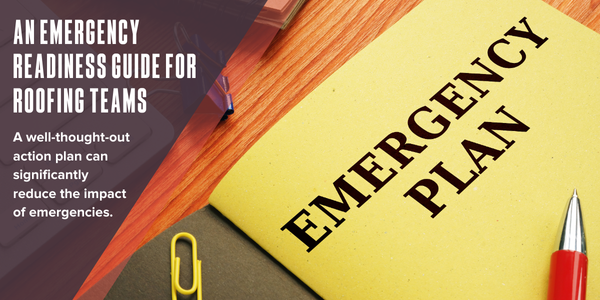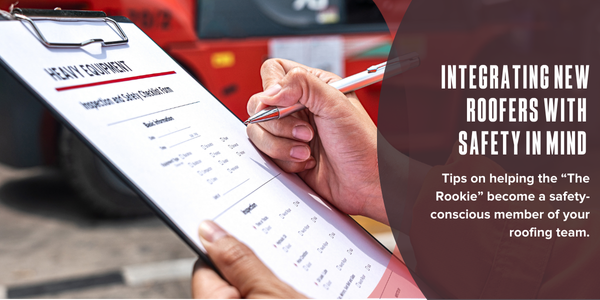Fall arrest systems in roofing: Ensuring safety through accurate distance calculations

By Cotney Consulting Group.
Elevated work is the norm in the roofing industry, so meticulous safety precautions such as the precision of fall distance calculations within fall arrest systems.
In the roofing industry, where elevated work is the norm, meticulous safety precautions are paramount. Central to this safety net is the precision of fall distance calculations within fall arrest systems. A slight miscalculation could escalate a routine task into a life-threatening event. In this exploration, the experts at Cotney Consulting Group delve deep into the intricacies of fall distance and underline the importance of ensuring it's accurate every time.
OSHA's perspective on free fall distance
Per OSHA's definition, free fall distance refers to the vertical movement of the fall arrest attachment point on a worker's harness from the onset of a fall to when the system starts its arrest. OSHA emphasizes reducing this distance to safeguard employees. A shorter free fall equals a reduced force upon arrest, minimizing risks such as internal trauma or broken bones.
Fall distance best practices for roofers
A basic fall arrest system comprises a body harness, a fall-arrest device and an anchorage mechanism. The goal is to diminish the free fall distance to the maximum extent feasible. A cardinal tip for roofing professionals is to connect their lanyards to an anchorage point, ideally above their shoulders and directly behind them. This technique optimizes force distribution, minimizes potential obstacles during a fall and facilitates streamlined emergency rescues.
Factors influencing fall arrest distance
For roofers, understanding and calculating fall distances is crucial. Key considerations include:
- Equipment length: The combined lengths of the lanyard, harness and anchorage connectors play a significant role. Due to their intentional slack, horizontal lifelines can stretch during a fall, adding complexity to calculations.
- Deceleration distance: Often overlooked, the deceleration device can extend the lanyard by about 3.5 feet. Furthermore, harness stretching can further influence fall distance calculations.
- Worker's height: The worker's height relative to the anchorage point can't be ignored. Systems must account for individual heights to ensure complete safety.
Additional safety considerations in roofing
Safety goes beyond mere calculations:
- Regular equipment inspection: Constant checks identify issues such as fraying lanyards or corroded components, ensuring equipment is always in optimal condition.
- Training and continuous education: Equipment efficacy is linked to its user's expertise. Continuous training ensures workers are updated on the latest safety protocols.
- Rescue planning: A comprehensive, rehearsed rescue strategy is essential to address fall incidents efficiently.
- Adapting to different roofing scenarios: Roofing tasks can vary widely. Each presents unique challenges, and understanding how to adapt fall arrest systems accordingly is vital.
- Feedback and incident reporting: Open channels for reporting near-misses or safety concerns can preemptively address potential risks.
- Innovations in fall arrest technology: Staying updated with technological advancements ensures the industry is equipped with the latest in safety equipment.
Commitment to safety in roofing
The roofing industry's safety commitment must be unwavering. Beyond just adhering to OSHA's guidelines, it's about nurturing an environment prioritizing every worker's well-being. By recognizing the intricate nature of fall arrest systems and the importance of continuous training and equipment updates, we pave the way for a safer workspace. With such precautions, we ensure every team member returns home unharmed, reinforcing the tenet that safety always comes first in roofing.
Learn more about Cotney Consulting Group in their Coffee Shop Directory or visit www.cotneyconsulting.com.























Comments
Leave a Reply
Have an account? Login to leave a comment!
Sign In